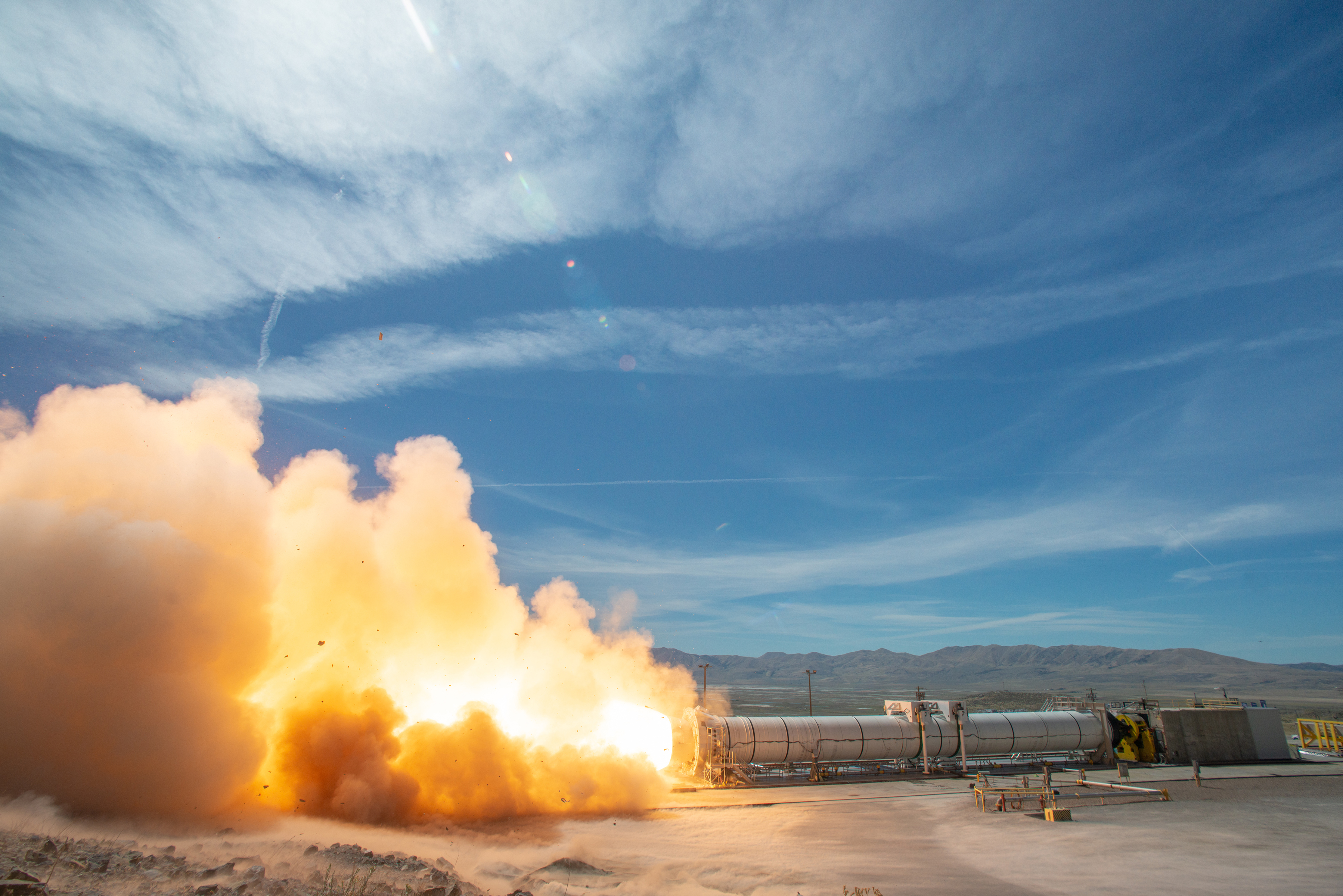The first solid rocket booster test for Space Launch System (SLS) missions beyond Artemis III is seen here during a two-minute hot fire test, Wednesday, September 2, 2020, at the T-97 Northrop Grumman test facility in Promontory, Utah. The flight support booster is structurally identical to each of the five-segment solid rocket boosters on the SLS rocket and produce more than 75 percent of the rocket’s thrust capability.
The flight support booster test builds on prior tests and will allow NASA and Northrop Grumman, the SLS booster lead contractor, to evaluate the motor’s performance using potential new materials and processes for future booster performance.
NASA is working to land the first woman and next man on the Moon by 2024. The SLS rocket, Orion spacecraft, Gateway, and Human Landing System are part of NASA’s backbone for deep space exploration. The Artemis program is the next step in human space exploration. It’s part of America’s broader Moon to Mars exploration approach, in which astronauts will explore the Moon. Experience gained there will enable humanity’s next giant leap: sending humans to Mars. SLS is the only rocket that can send Orion, astronauts and supplies to the Moon in a single mission.
Image Credit: NASA/Northrop Grumman/Scott Mohrman
2020年9月2日星期三,在犹他州普罗蒙托里的T-97诺斯罗普·格鲁曼测试设施,进行了为期两分钟的热火测试,这是继阿尔忒弥斯3号任务之后的第一次太空发射系统(SLS)固体火箭助推器测试。飞行辅助助推器在结构上与SLS火箭上的五段式固体火箭助推器相同,可产生超过75%的推力。
飞行辅助助推器测试建立在以前的测试基础上,将使NASA和SLS助推器的主要承包商诺斯罗普·格鲁曼公司能够利用未来助推器性能的潜在新材料和工艺来评估发动机的性能。
NASA正致力于在2024年前让第一位女性和下一位男性登陆月球。SLS火箭、猎户座飞船、门户和载人着陆系统是NASA深空探索的骨干。阿尔忒弥斯项目是人类太空探索的下一步。这是美国更广泛的月球到火星探索方法的一部分,宇航员将探索月球。在那里获得的经验将使人类实现下一个巨大飞跃:将人类送上火星。SLS是唯一能在一次任务中将猎户座飞船、宇航员和物资送到月球的火箭。
图片来源:NASA/Northrop Grumman/Scott Mohrman







